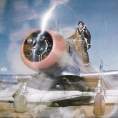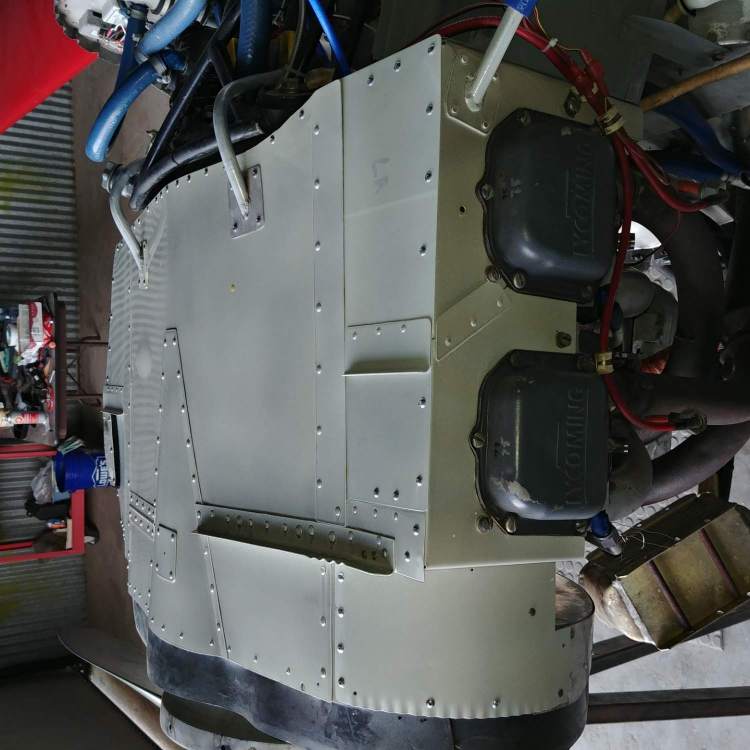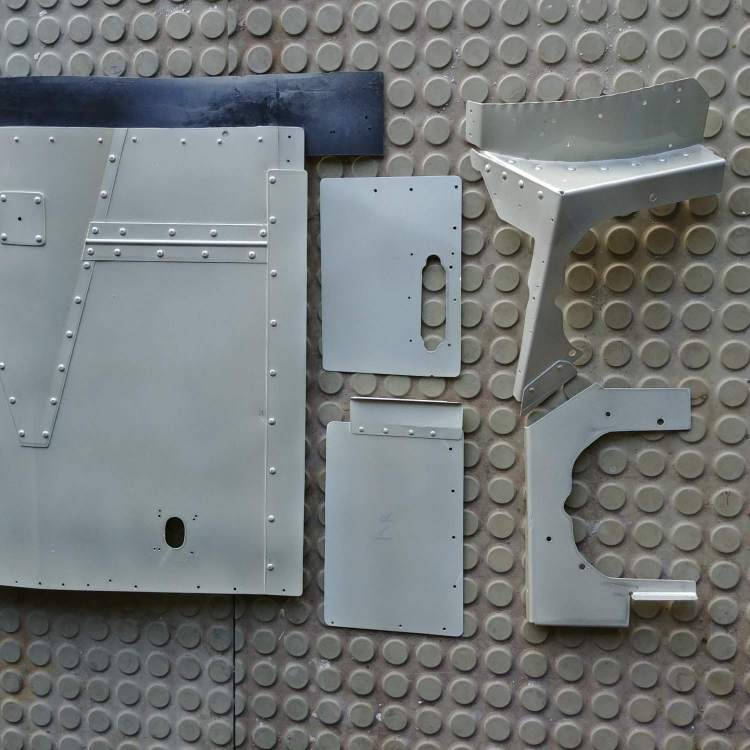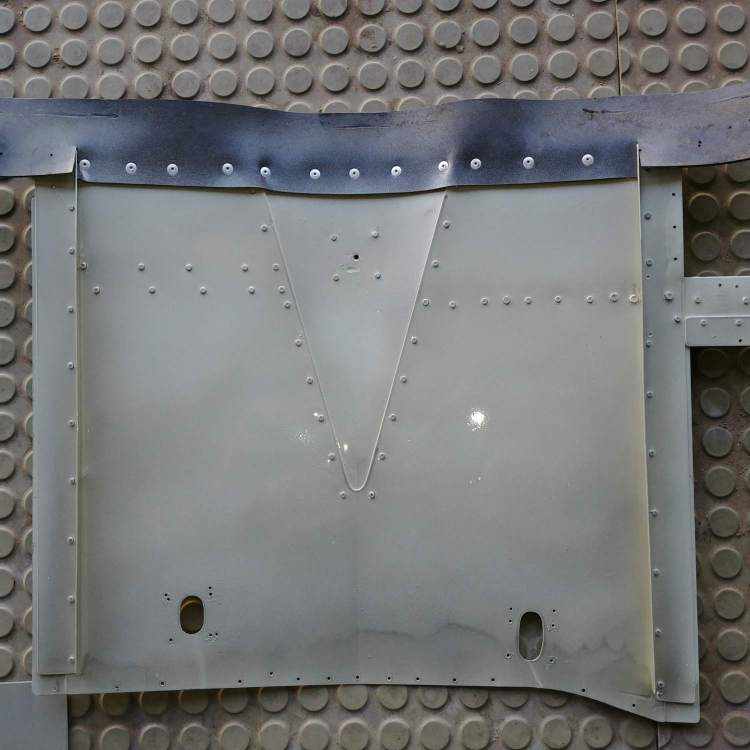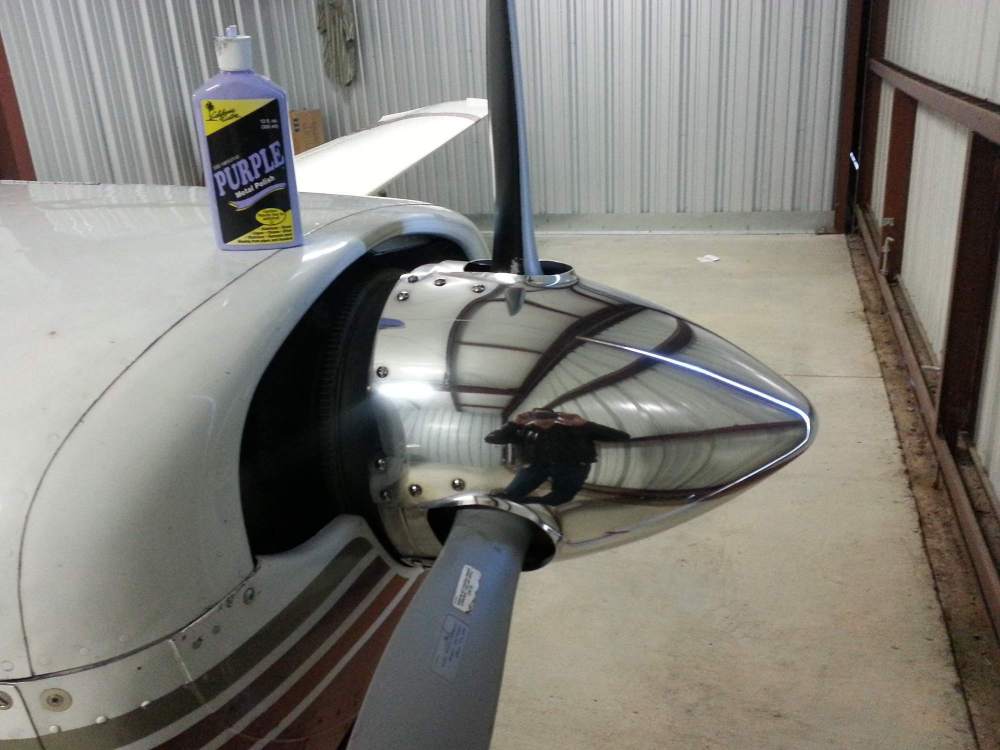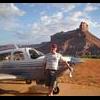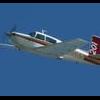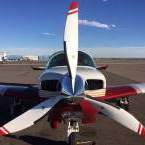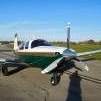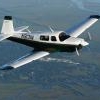Leaderboard
Popular Content
Showing content with the highest reputation on 07/08/2021 in all areas
-
6 points
-
I always use @Hank 's tail number on my IFR flight plans, so I just fly through Bravo even if they tell me no.4 points
-
Some TRACON's are better than others. CLT is hard over on no transient traffic through their Class B to the point of endangering aircraft during weather deviations. ATL is much better. DCA (Potomac) seems pretty good as does DTW. The thing about ATC facilities I notice is they tend to have a "DNA" that makes them the same year over year. Some are very accommodating and service oriented, others seem to hate their customers. The best, ATL, the worst IMHO is Indianapolis. I feel sorry for the people fresh out of the academy who get sent to Indianapolis.3 points
-
I suspect that the controller was saying that he wouldn't allow YOU to fly into Bravo, likely to reduce workload. Not aware of any rules changes.3 points
-
Agreed, before I got my first Turbo Mooney I climbed extensively in OR, UT, ID, NM and WY (besides more local CA) using a rental Arrow. All of these trips were much longer than a weekend though and most included camping gear as well as climbing gear. Of course not enough performance to fly IFR with the high MEAs so all legs were VFR. But the Arrow is pretty much a dog compared to the Mooney E/F with the same engine. But since they were longer trips I had the flexibility to only fly when the conditions were prettty much perfect; confining flights to the morning hours. A weekend trip changes everthing; especually with a job. Flexibility to fly when conditions are best is no longer practical with the pressure to make the very limited weekend schedule work out. You're either flying up Friday afternoon/evening after wortk or very early Sat morning. Then plan to return after skiing or climbing sunday afternoon; typically after the winter winds have picked up or summer monsoonal TRS have been building and before things have settled down by around sunset or later. Without the performance of Turbo or big bore engine you also don't have the diversion capabilities around weather because of the mountainous terrain. Far more often you have to be willing to delay. Don't get me wrong, its still doable within these constraints of course and I had many fantastic adventures yet with plenty of delays too. I never make it to CO except to Grand Junction to climb at Moab (at the time rental cars weren't available at CNY). But plenty of slow climbs out of summer time high DA airports looking for thermals to help get up to cooler air helped focus my desire for a Turbo when I became an owner. First a 231 and then I finally had what I really wanted when I stepped up to a 252 which is now a coverted Encore. I didn't really even know what I missing either all those years till I learned how easy it was to fly out and above the summer time bumps in the Turbo and see all the TAS I gained flying in the higher teens and then the added ease at flying around Wx once high that made a whole lot of flights possible. But I also have a friend that owns a C172 and a condo at Mammoth that on a perfect weekend flys it up there (usually spring or fall) - but its got to be just about perfect to make in and out in the C172 without lots of excitement doing it.3 points
-
You are absolutely allowed to fly in Bravo airspace while flying IFR, but you still have to comply with ATC instructions and routing which may keep you away from busy Bravo airspace for traffic separation.2 points
-
Get it cleaned up as quickly as you can, your climb performance will be better. I wrote this on 9-27-2020. It is a compromise. The best second segment climb comes with reduced to zero flaps. The shortest take-off run comes from increased flaps. Example 1. If you have the runway but you need the climb performance, use no flaps and come off the runway with extra speed and energy to quickly achieve Vx. Very commonly we would come off Guatemala City with Flaps 1 "Improved" which means we would accelerate to a higher than normal Vr speed to leave the runway with extra "smash" and reduced drag due to the low flap setting. The climb performance was spectacular but you needed intestinal fortitude to hold the airplane on the deck as the end of the runway came towards you fast. Example 2. Taking off of PHOG nonstop to KATL in a fully loaded 767. OGG was only 7000', same length as LGA. Solution? Roll with the highest flap setting possible other than landing flaps, Flaps 20. Even with a 5 knot tailwind Rwy 2 works better than 20, because 20 has rising terrain, but 2 shoots you out across the beach. over the ocean, no obstacles, so climb performance is not critical, runway performance is the need. Sure she climbs slow, but you got her off the deck quick With light airplanes it is similar but not quite so stark and in a Mooney, you may not have a lot of choices in flap settings, but suffice to say if you need climb performance, the cleaner you leave the ground, the better off you are if you got the runway. If you need to leave the ground quickly, higher flap settings, but be prepared for a slug in the climb due to as donkaye points out, high drag. Consider your climb performance in a aborted landing and that is what you would have at best with a full flap take off. If climb performance is not important, but the runway is really short it would help, but since you have no numbers in the POH you are really in test pilot territory and any mishap would be hard to justify the use of full flaps while sitting at the "big green table" assuming you survive.2 points
-
There are a combination of things going on. Remember that the turbocharger is what produces MP above ambient, and it is not mechanically connected to anything in the engine, so it is not driven by the prop. The prop can be windmilling and the engine turning, but unless there is exhaust the turbo winds down. Another complicating factor is that the mags are pressurized and pressurization will fail without your pressurization source (the turbo) in operation. If pressurization fails the spark can arc across the mag cap to a cylinder the spark was not intended for. The resulting phenomenon, called “high altitude miss,” is very hard on the engine. Or the spark may simply be insufficient to cause combustion. See e.g. https://www.aviationpros.com/home/article/10388584/magnetos-under-pressure At 20k the standard ambient pressure is less than 14”. From experience I can tell you that the engine cools rapidly when you are at best glide and the engine is not firing. So now you are trying to start a cold to very cold, low compression engine, without enough spark. The POH for the 231 warns that you may need to descend below 12,000 for restart to happen. Even then, there are warnings throughout the POH against operating the engine at greater than 16” or 20”, depending on how low the oil temp has fallen. The POH warns that if the OT falls below 100, an attempt to run the engine at power may result in a sudden engine stoppage. What is going on, is that the oil is too cold to properly lubricate the turbo bearings, and the OT must be warmed before making power. Add in that you are crossing the Alps, or the Rockies, and you can’t descend to 12k and don’t have time anyway to warm the engine if it gets cold. It is not a wise move. These recommendations in the POH are conservative. And sure, if you jump on the fuel switch the instant the engine stumbles it should fire right away. I have done it. But I have done it over the mid-section of the US where I have all day to restart or find an airport if things don’t go perfectly. I would not do it, say, on a jump from Great Falls to Kalispell. Having done it, and having more than 6 hours of fuel on board, I no longer feel the need to give it a try. Much safer, is to test your fuel flow meter so you know its readings are accurate, fill the tanks correctly, know to a few tenths what is in each tank, and then not run one dry. Turbo ops are different from NA ops in many ways. For one thing, the NA is unlikely to fly at an altitude where unpressurized mags will not function properly. Turbo ops are very safe, in some ways safer than NA because you have an improved ability to get above weather. But you cannot just blythely apply NA ops to turbo ops or vice versa. PS I want to say that I admire curiosity and people who are willing to ask questions and seek information. I wish, when I first started flying my 231, that there had been more pilots savvy about turbo ops out there. I am not a CFI nor an engineer, just a pilot with some hours. I learned about “high altitude miss” the hard way, by having the “joy” of experiencing it firsthand, and I also learned the hard way not to “climb to target EGT,” which means leaning in a climb, an NA technique. Turbo ops are not complicated, when I fly, I have reduced my power settings to just some simple techniques. But to do that, one must understand the “why.” If anyone has more to teach about turbo ops I would love to hear it.2 points
-
At one point mine was glued down with contact cement, it was a pain to clean off the old glue. Personally I would NOT glue it down, even though there are no inspection panels under it, I still like the idea of it being able to be easily removed and reinstalled. I used heavy duty snaps which allows for easy removal if needed, Velcro would have served the same purpose. If you go Velcro, use 3M industrial grade.2 points
-
That’s correct, Both Manufacturers that produce props for Mooneys require that the propeller be Prepped an painted IAW the Manufacturers Overhaul Manual. I have even seen a few local A&P’s refuse to sign off an annual because of a polished propeller. As far as chrome plated spinners, Not a good idea. Spinners are polished or Painted. An there is no guidance published by the manufacturer showing how it should be done. Now, there are shops out there that will chrome a plastic truck stop fork an that’s great. Just not a spinner. I have seen a few that had been chromed an the prop is usually hell to balance an the stuff seems to chip an peel off rather prematurely2 points
-
Another big EGT issue is a dead magneto. I had to richen up twice in less than a half hour to recapture my cruise setting (1450°), then suddenly it was over redline, way above 1600. Turned ignition from Both to Right, not much change; back to Both then to Left and the noise got really quiet and the plane pitched strongly nose down. Back to both and it started up again. Went to Right and releaned . . . .2 points
-
Take a good, hard look at your future instrumentation. Sometime (maybe even fairly soon) you’re going to replace your DG for an electronic HSI. Whatever you do now should be laying the groundwork for your future panel. I have dual G5s and I love them. They work together and are everything I need (and more). The 275 is tempting, but for 95% of the time, they’d be doing exactly what my G5s do and I sorta prefer the slightly larger screen on the G5. I love the look of the AV30 AI and HSI, but paired with a Garmin navigator the G5s easily made the most sense.2 points
-
2 points
-
the high number should be considered the absolute minimum, preferably 0.5 to 1.0 GPH above the high number is preferred. Sent from my iPhone using Tapatalk2 points
-
1 point
-
An IFR rating and a turbo increases the dispatch reliability a lot. After owning a 231 and converting it to a Rocket I bought a 1990 J/MSE. Could not enjoy the plane. Every flight was a reminder of what it couldn’t do. Winter mountain flying goes from 20% dispatch to 80% when you have a turbo and the IFR. Flexibility to wait out weather is always mandatory but without the additional capability it becomes constant. The trip that convinced me to sell the J to a flat lander was from Saint George Utah back to Denver. As I watched many planes leave I chose to drive to Denver. Had to make the 1300 mile round trip the next Thursday to recover the plane and return my fathers car. I could not expect to stay clear of clouds in the J on that trip. A J in clouds in the fall over the mountains was beyond my comfort level. The Rocket on the other hand could have gotten above or around the clouds and stayed VFR that day.1 point
-
It's also possible that a polished prop will get flagged during a ramp inspection since they're pretty obvious and it's a known thing that they're not approved for polishing on certificated aircraft. Generally steel propeller blades can be polished, but those are typically very large propellers and not something you'd find on a Mooney. Hamilton Standard does say in original (i.e., WWII-era) documentation that some of their large aluminum propellers can be polished, but none of those are used on Mooneys, either.1 point
-
I believe that GI 275s would let you keep your current A/P and give you the option to switch to a GFC 500 in the future if needed. You could install one GI 275 now and put in a second (HSI) later. Skip1 point
-
The Garmin demonstrator was a J and that covered the Short bodies minus the earlier models. We Dynon panel people are hoping the same happens for us…. I have a 67C1 point
-
The GFC500 is as 7-7-21 certified for Mooney M20 Models: C, D, E, F, G, J, K, M, R, S (including 1962-1964 C, D and E Models)1 point
-
I would have to see your data to be sure. But this normal since with the higher temps, oil temp goes up and oil temp directly affects your Max WOT MAP. FF in turn just follows your MAP. Your controller is set to achieve redline MAP right at normal oil temp of 175F, and do to the nature of hydraulic controllers working with oil pressure, you'll see overboost when the oil temp hasn't yet warmed up too full operating temp and underboost when the oil temp is over normal operating temp. Since FF is just following your MAP, if there is some underboost in the MAP (lower MAP) FF will also be lower. This is normal but you may not have your controller set exactly to give redline right at an oil temp of 175F either. Also, just like Winter vs Summer differences, you should notice that on the first take off of the day, before oil temp is fully warmed up that MAP and FF are highest at takeoff and then a subsequent takeoff this time of year, with oil temp > greater than 175F will show a bit lower MAP and thus lower FF. Its entirely normal.1 point
-
Flaps shorten the takeoff roll but decrease climb rate. Generally, the reduced takeoff roll is more advantageous than the improved climb to clear the FAA’s standard 50’ obstacle. Many light airplane POHs say to raise flaps after the obstacles are cleared because after that they are hurting rather than helping. I generally raise the flaps in my M20J accelerating through 80 KIAS. I don’t like to do it too low because I use the same procedures IFR and VFR. There is a significant trim change with flap retraction and I don’t want to be distracted unnecessarily at low altitude on an IFR departure. Skip1 point
-
I am also super interested in this Casey event (if not this year, then next year when border opens). Please send me details! May be me alone, poor Byron isn’t into camping generally and especially without facilities1 point
-
If you ever can see yourself upgrading your autopilot to GFC500, then get the G5.1 point
-
1 point
-
What kind of cylinders are they? Chrome have more blowby and oil use based on how they break in the rings vs “channels”. 6-8 hrs / qt would be pretty good for chrome.1 point
-
Rick, I know you have finance on your mind…. Looks like Siri was helping you with your spelling. +1 for electronic bidding. A fancy altitude over the ground sensor for my ship would really be cool…. Best regards, -a-1 point
-
My factory green bands stop 2-3 needlewidths below the redline. I'll grab a photo if necessary. So I make sure everything is inside the green, and am usually 2-4 needlewidths below. EGT numbers are fine for your plane, but the problem is that people want to use their own EGT numbers on someone else's plane. Like the guy a couple of posts up who cruises at 1250°, which is where I generally am while taxiing from hangar to runway--and I generally peak 1500-1525° and cruise 1450-1475°, higher than his peak value. So there, absolute EGT numbers are hooey.1 point
-
yep - unless you have 2.11 or later you may want to get back to him. It sounds like based on above there’s a 2.12 out there….1 point
-
Hmm, never considered that. I think I'm going to try replacing the vernatherm first. Then consider a new cooler.1 point
-
I found this, but it’s for a Continental https://www.csobeech.com/files/TCM-SB-M89-9.pdf Excessive crankcase internal pressure is likely from excessive blow by. I know of nothing like this for a Lycoming1 point
-
If you pass the compression test, your blow by is within limits, the compression test is of course actually a “leak down” test and determines both how much leakage there is, and where it’s coming from. There have been tests using I believe an altimeter or maybe an airspeed indicator connected to the crankcase vent to determine running blow by, I have never done it, maybe it was a Continental thing? I’ll see if I can find something, or maybe I’m confusing it with something else.1 point
-
@carusoam Makes sense. However, item 4 on my already done list was having the oil cooler overhauled by Pacific Oil Coolers. Made zero difference.1 point
-
Neil, this is your chance to get back into a Mooney, one part at a time! This year, shock disk and fuel senders...next year, who knows, maybe a IO550 TN1 point
-
Mine started doing that a few years ago. I have literally changed or rebuilt every part (including the engine) between the fuel tank and the gauge. Nothing fixed it. Let me know what you find. I hope you don’t spend as much as I have to accomplish nothing.1 point
-
Hope we helped. I agree with your analysis of the takeoff from KVCT. Sounds like all was good but the fuel flow was a little low. The explanation on the MP, is that the whole purpose of the intercooler is to cool the induction air. At cruise the cooling can be as much as 100 dF or more. In other words, the Compressor Discharge Temp (the temp of the air exiting the turbo) might by, say, 250 dF and the Induction Air Temp (the temp of the air entering the induction system) might be 150 or even less. The 40" setting for the nonintercooled engine assumes that the CDT and the IAT are the same. Hot air is less dense than cool air. It has less molecules per unit of volume than cool air, in particular, fewer molecules of O2. So without an intercooler, at 40" you would be feeding the engine "x" molecules of O2 to be used in combustion, and with the intercooler, you only need around 37" to feed the engine "x" molecules of O2. If you feed the engine 40" of cooled air you are feeding the engine significantly more molecules of O2 than the Pilot Operating Handbook anticipates, and thus making significantly more HP than the engine was rated for.1 point
-
Thanks everyone for the replies. I'm dropping her off with Maxwell with weekend to get the controller fixed. Will update with the results.1 point
-
I originally bought my Mooney for the same destinations and more - for rock climbing and skiing trips - but these are much better done in a Turbo. If you continue to pursue these kinds of trips a Turbo is in your future. Just getting to MMH IFR requires a MVA altitude of 16.5K. As a season pass holder with an airpoirt car up there I've done it many times; at all times of the year. There are a lot of perhaps new factors to consider besides just density altitude, such as mountain turbulence which very much reduces climb rates including especially avoidng the very turbulent rotors that may be invisible when winds over the ridge lines are strong. There actually is a good use for your IFR on these trips but not perhaps the way you may have originally thought. From your base at SMO, trips to MMH and TRK it can be very beneficial to fly a composite flight plan of both IFR and VFR so that your departing and returning tothe LA basin IFR and flying the Owens Valley portion with Joshua Approach VFR. There are other flight planning options up the central valley and over Mammoth Pass. But with your J, landing at Bishop and having access to a car their would greatly enhance the frequency of making the trip successfully throughout the winter. I personally love MMH, although its still wetter snow being in CA, it's typically still offers the finest skiing we can get before going to UT or WY and you can't beat the skiing off the top. PM me if you would like some personal help.1 point
-
Hi Jay, I may be able to help you by making you some new parts. I’ve done some for others in the past. Send me an e-mail and I’ll see if I can help. sabremech@gmail.com Thanks, David1 point
-
Gens can be used and probably worth it if you have the weight available. There are charging stations, however the daisy chained power cords is a little concerning, and you have to trust everyone there or come up with a locking cage to charge your phone in. Bring a small fuel can, there is a gas station just out the gate of the N40. That would be a good time to use a bike. Otherwise, I have not found a need for a bike.1 point
-
Says me spend 50 G's flying that wonderful Mooney around the world. I really don't think the panel needs anything. If the vacuum pump bothers you that much a couple G5s will fix it right up. Still enough leftover to go around the world.1 point
-
1 point
-
Thank you Craig - really appreciate the work you continue to put into this site for everyone’s benefit. For folks who are still “Basic Members”, highly suggest giving a small amount via PayPal so Craig can continue to fund this for all of us. Steve1 point
-
I haven’t seen any deals announced yet. It seems like every year someone makes a similar comment about Aspen’s survival as a going concern and yet they remain. The Pro Max is a nice upgrade over the original pro in speed and display. For those of us that aren’t happy with garmin’s stuff, it gives an option.1 point
-
@a64pilot Yet, again: I have replaced the hoses to/from the oil cooler. I have had my A&P check the seat and the vernatherm. Now, I know the oil cooler was overhauled as I took it to, and picked it up from, Pacific Oil Coolers personally. I could see that the baffles and oil hoses have been changed. BUT, I really do not know what my A&P did when checking the vernatherm and seat. So, at this point, I'm just going to replace the vernatherm with new and check the seat myself. I have a friend that is an A&P who is willing to supervise and sign off. They're like 0.3AMU and I just don't feel like screwing around soaking and measuring the one I've got. I will check washers! Never thought of that, thanks!1 point
-
I have to unhook my seatbelt and bend over to the point of autofellatio to switch tanks. One of the few things I genuinely dislike about the Mooney. On approach I switch at the top of the descent. I don't want to be head down in the vicinity of an airport, and I definitely do not want my seatbelt off that low and slow.1 point
-
I go with data, not anectdotes. Here is the Savvy data on my oil temps vs. my cohort (over 10,000 flights). It's pretty clear my temps are much higher than they should be for other Mooney M20F/Js. I also have some low power flights (sightseeing at 50-55% power) where the temp is stable at, what a surprise, around 185F. I am beginning to wonder if my vernatherm is not completely closing (not fully expanding) so at higher power levels not enough oil is making it to the oil cooler.1 point
-
I do not fly as my profession, but I do my best to fly professionally. "Hope" has no part of a flight plan, whether it's filed or not. I do try to not scare my passengers . . . .1 point
-
1 point
-
In the course of troubleshooting a problem with the trim servo in my KFC 150 I attempted to find an engineering system description. I knew this had to exist somewhere but it was not to be found in any resource I could locate for free. The codex for the logic of KFC 150 operation is King Manual 006-5539-00 entitled "King KC 190,191,192 Autopilot Computer Maintenance / Overhaul". There are no free sources that I could locate. eFlightManuals.com has them available for .1 amu or perhaps you can give your local shop a couple of six packs and take theirs to Staples. However you acquire access to the manual, turn to Section 4 for your model computer and begin to learn how the system actually works in detail. Expect that this will take a while and in some places be a bit of a steep learning curve if you are not an engineer and/or electronics enthusiast. Here is a crib if you are interested in the trim servo. The King terminology for what I would call the "trim system" is the "autotrim system". I thought initially that was an option I did not have installed. Even for the non-engineer, the Theory of Operation section of this tome is full of useful and interesting things not covered in the Pilot's Guide, which is primarily concerned with what button to push when rather than how the system actually functions. Why King did not make this information easily available is a mystery to me. Perhaps they thought only engineer pilots would care. Here you can discover the one true answer to such mysteries as: - How to calculate the lead for level off when you hit altitude hold. Answer: Lead the desired altitude by 15% of the rate of climb in feet. I tested it yesterday, it works perfectly. - How does the system recapture after a losing the glideslope signal? In distinctly different ways I discovered depending on the delay before the glideslope signal is again recieved. - How in the world does it decide when to engage NAV mode once it is armed? Well ... it depends on exactly how you engage NAV mode and the offset error from the desired course at the time it is engaged. There is a whole section on just this topic. - And the ultimate and final answer to that old chestnut: Does the glideslope capture from above and below? Answer: Absolutely yes it does but it requires a null in the glideslope error signal to do so. If you approach from above and then level off just at or above the glideslope capture never occurs. (Guess now I know this ...) Fly though the glideslope, like you do when level approaching from below, and it captures every time. It is my hope that some other technical knowledge seeker will someday find this post and discover the path to KFC 150 enlightenment thus preserving their sanity. Not to mention that you will be able to definitively determine the difference between how your KFC 150, or someone else's, is presently working and how it is SUPPOSED to work.1 point


